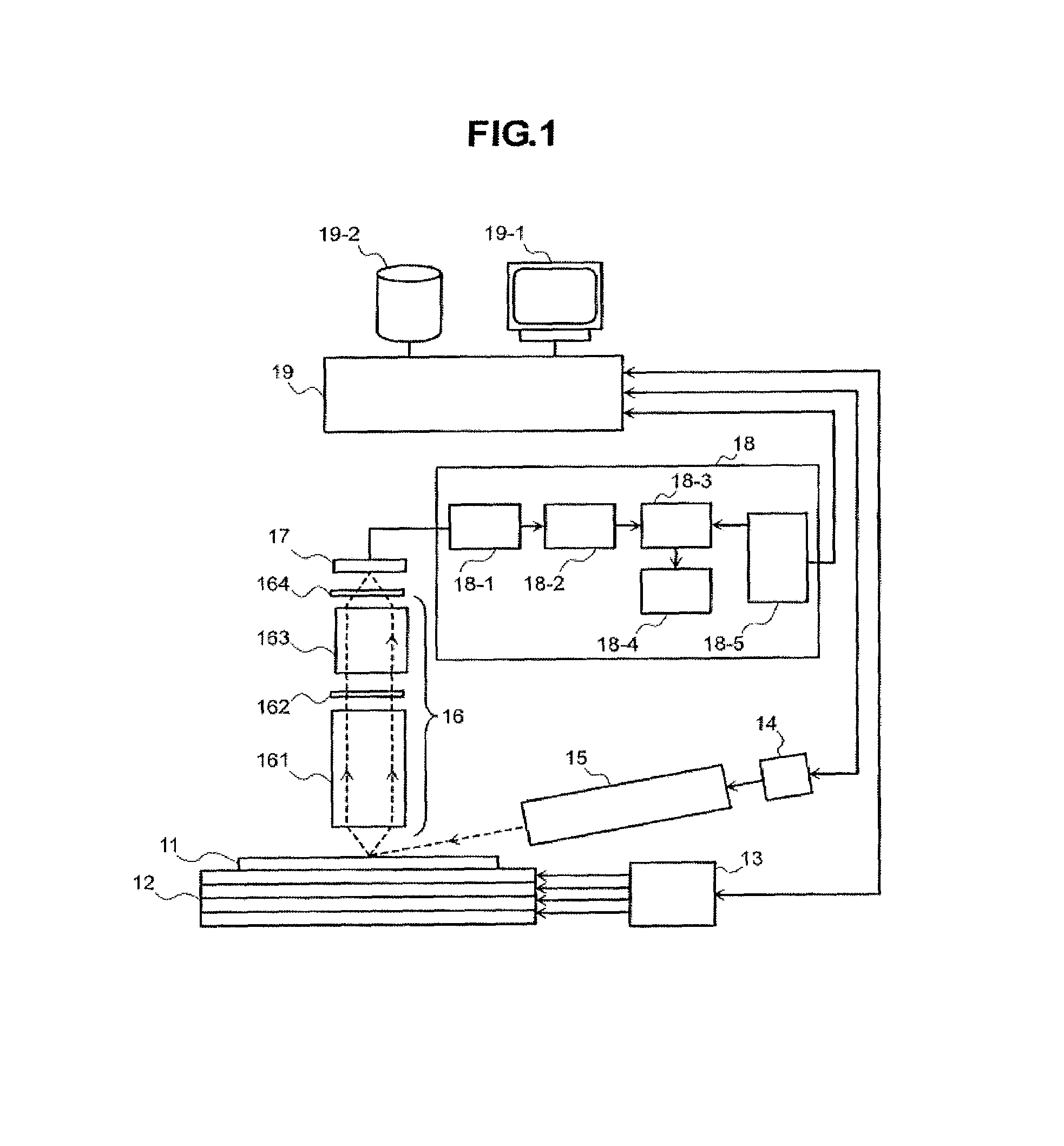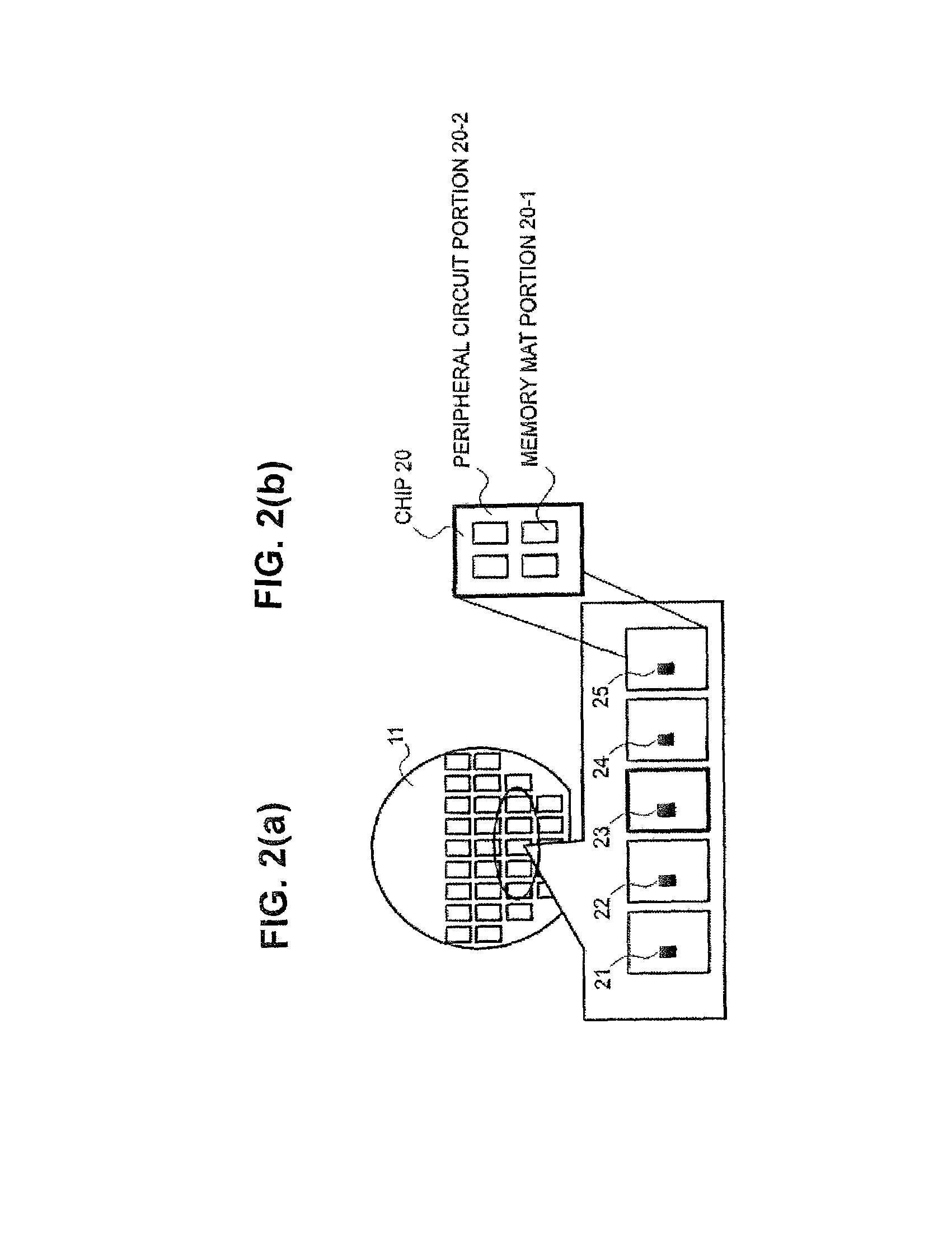Defect inspection method and apparatus
a technology of defect inspection and inspection method, applied in the direction of mechanical roughness/irregularity measurement, optical radiation measurement, instruments, etc., can solve the problems of low sensitivity, false judgment, inability to detect defects, etc., to reduce brightness unevenness, high processing speed, and high sensitivity
- Summary
- Abstract
- Description
- Claims
- Application Information
AI Technical Summary
Benefits of technology
Problems solved by technology
Method used
Image
Examples
embodiment 1
of the Invention for Solving the First Problems
[0076]A first embodiment will be described below which is a defect inspection method employed by a defect inspection apparatus for semiconductor wafers which uses dark-field illumination. FIG. 1 shows the configuration of an exemplary defect inspection apparatus using dark-field illumination. Symbol 11 denotes a sample (an inspection subject such as a semiconductor wafer), symbol 12 denotes a stage capable of being moved and rotated in the XY-plane and being moved in the Z-direction (height direction) while being mounted with the sample 11, and symbol 13 denotes a mechanical controller for driving the stage 12. Symbol 14 denotes a light source for emitting laser light and symbol 15 denotes an illumination optical system. Laser light emitted from the light source 14 is applied to the sample 11 via the illumination optical system 15. Scattered light coming from the sample is 11 image-formed by an upper detection system 16, and a resulting...
embodiment 2
of the Invention for Solving the First Problems
[0102]A second embodiment is directed to another defect inspection method in which the image processing system having the system configuration described in the first embodiment is employed and plural detection optical systems for detecting images are provided. The inspection apparatus of FIG. 9 is configured in such a manner that an oblique detection optical system 90 is added to the defect inspection apparatus of FIG. 1 which uses dark-field illumination (i.e., two detection optical systems are provided). Like the upper detection system 16, the oblique detection optical system 90 is composed of an objective lens 901, a spatial filter 902, an image-forming lens 903, and an optical filter 904. Scattered light coming from a sample 11 is image-formed via the objective lens 901, the spatial filter 902, the image-forming lens 903, and the optical filter 904, and a resulting optical image is detected by an image sensor 91 and thereby converte...
embodiment 3
of the Invention for Solving the Second Problems
[0138]FIG. 20 shows the configuration of a defect inspection apparatus according to the third embodiment. This defect inspection apparatus is composed of a light source 0-1, an illumination optical system 0-100, an inspection subject substrate W, an objective lens 0-3a, a spatial filter 0-4a, an image-forming lens 0-5a, a polarization detecting section 0-200a, a signal processing section 0-300, a total control section 0-6, a display section 0-7, a computing section 0-8, a storage section 0-9, an X-Y-Z-θ stage driver 0-10, an X-Y-Z-θ stage 0-11, and a light source driver 0-12. The light source 0-1, the illumination optical system 0-100, the objective lens 0-3a, the spatial filter 0-4a, the image-forming lens 0-5a, and the polarization detecting section 0-200a constitute an optical system 0-1000.
[0139]The operation will be outlined below. Light emitted from the light source 0-1 is applied to the inspection subject substrate W via the ill...
PUM
 Login to View More
Login to View More Abstract
Description
Claims
Application Information
 Login to View More
Login to View More - R&D
- Intellectual Property
- Life Sciences
- Materials
- Tech Scout
- Unparalleled Data Quality
- Higher Quality Content
- 60% Fewer Hallucinations
Browse by: Latest US Patents, China's latest patents, Technical Efficacy Thesaurus, Application Domain, Technology Topic, Popular Technical Reports.
© 2025 PatSnap. All rights reserved.Legal|Privacy policy|Modern Slavery Act Transparency Statement|Sitemap|About US| Contact US: help@patsnap.com



